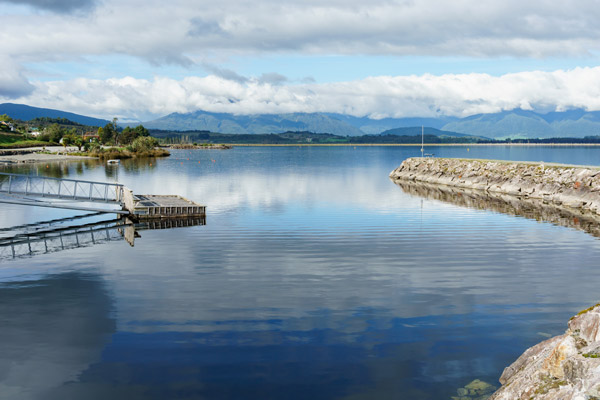The recent experience with Cyclone Gabrielle, which brought record levels of rain to the North Island and tragically killed 11 people while displacing 100,000 more, is just the most recent example of how extreme water issues can become.
In 2010, the North Island experienced the worst drought in 60 years and returned in 2020, when 77 continuous days of drought made for Auckland’s driest January-April period on record.
Some of the issues are man-made. Urbanisation, the drainage of wetlands and the damning or modification of rivers are adding to the complexity. In August 2016, over 5000 people fell sick with gastrointestinal illness in Havelock North, a suburb of Hawke’s Bay. Three people died.
Climate change is having an impact. For example, a March 2023 study by researchers at Te Herenga Waka – Victoria University of Wellington and NIWA found that, on average, summer river flows in the North Island are decreasing, and the rivers are getting drier. Meanwhile, ice from the South Island’s famous glaciers continues to melt, with snowlines falling.
Globally, the NZ brand is one of ecological purity. However, rivers are struggling with significant pollution issues primarily created by the agricultural industry.
This puts the nation’s two primary sources of income, agriculture and tourism, at loggerheads. As a result, thousands of farmers do not report their fertiliser use, with caps reportedly breached without consequences.
In 2019 the nation’s environment ministry said that two-thirds of NZ’s rivers were unswimmable and three-quarters of native freshwater fish species were threatened with extinction.
In March 2021, a Government report estimated that as much as NZ$96 billion was needed over the next 30 years to bring three waters infrastructure – drinking water, sewage/wastewater and stormwater – up to acceptable standards. Add maintenance and renewals, and the budget could be as high as NZ$100 billion.
NZ councils spend around NZ$1.5 billion a year on water, amounting to NZ$45 billion over 30 years, so there is a significant shortfall in what is needed.
The Ardern Government responded with a Three Waters Reform program, which aimed to transition to a new way of delivering water by 2023. However, this provoked resistance from many stakeholders, including some regional governments, which decided to opt out.
Meanwhile, pressure continues to build. While water consumption rose 12% between 2016 and 2020, and this outpaced population growth by only 6.5%.
The average New Zealander uses 155 litres of water daily, while some in Southland use close to 700 litres. In comparison, the Australian city of Melbourne has a target of 155 litres per day.
One issue is metering, barely more than half of NZ residents live in houses with water meters. But even in cities like Christchurch, which has meters, the charging model does not encourage restraint. Residents pay a fixed annual fee there, which renders metering irrelevant.
In a recent Water Tight report, global consultancy Deloitte summarised NZ’s water issues. The firm cited growing demand for a limited resource and uncertainty from climate change, declaring that “the era of low-cost water is over.”
Solutions lay in new technologies to drive efficiency, new sources of financing to engage the private sector and a focus on resilience and sustainability through “water stewardship”.
The report identified the major “infrastructure deficit” facing NZ, created by a “fragmented approach” to water management nationwide.
“This fragmented approach has resulted in an uneven infrastructure deficit of massive scale, seen inconsistent water delivery for communities across NZ, and makes it difficult for a central framework to be put in place with the right controls and risk management,” the report said.
Emphasising the positive, the report said these challenges created opportunities to build a better system that “enhances system performance and becomes economically viable when implemented at scale.”
Echoing the Government’s Three Waters reforms, Deloitte recommended establishing a “limited number of specialist water entities.”
In IPWEA’s view, an emphasis on prudent management and maintenance of existing water infrastructure is as essential to New Zealand’s water security and resilience as any new infrastructure we might build in the future. In addition, it is vital to continue enhancing our communities’ quality of life through improved public works and services.
Water resources must be allocated fairly across sectors such as agriculture, energy, and industry – and of course, consumers in our towns and cities – and to do that effectively requires high-level asset management skills.
With so many stakeholders in NZ, it is little wonder that some issues are pending before the courts.
Recently, the environmental lobby has had some wins. For example, eight applications to take 15 million cubic metres of groundwater per year from the Ruataniwha aquifer were denied in Hawke’s Bay.
In Southland, conversation lobby group Forest & Bird and statutory body the Fish & Game Council succeeded in the Environment Court in appealing Southland’s proposed water and land plan, which sets directions that impact water quality.
That decision has been appealed to the High Court by the regional council and dairy producers Fonterra, DairyNZ and Federated Farmers Southland.
Add that to the infrastructure deficit, and it would suggest that there is no easy solution to NZ’s water issues.
As the Deloitte report says, new standards and new regulations mean that current infrastructure, “even which properly replenished”, will not, on average, meet the performance requirements needed in the future.
The stakes are high, and opinions are highly polarised. This presents challenges for legislators, regulators and asset managers as they seek solutions for New Zealand’s ongoing water challenges.
For more information about the IPWEA, go to: www.ipwea.org/home














